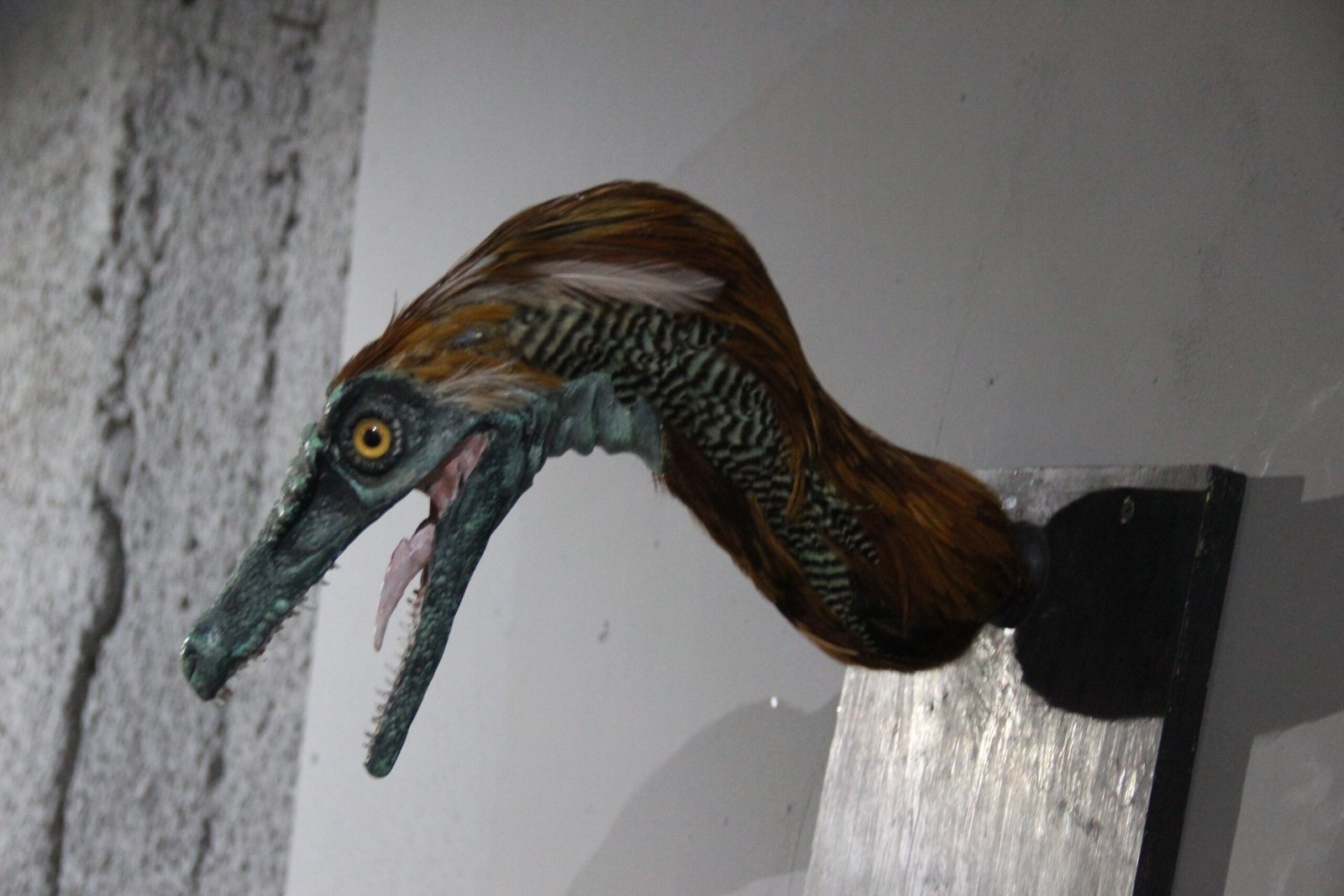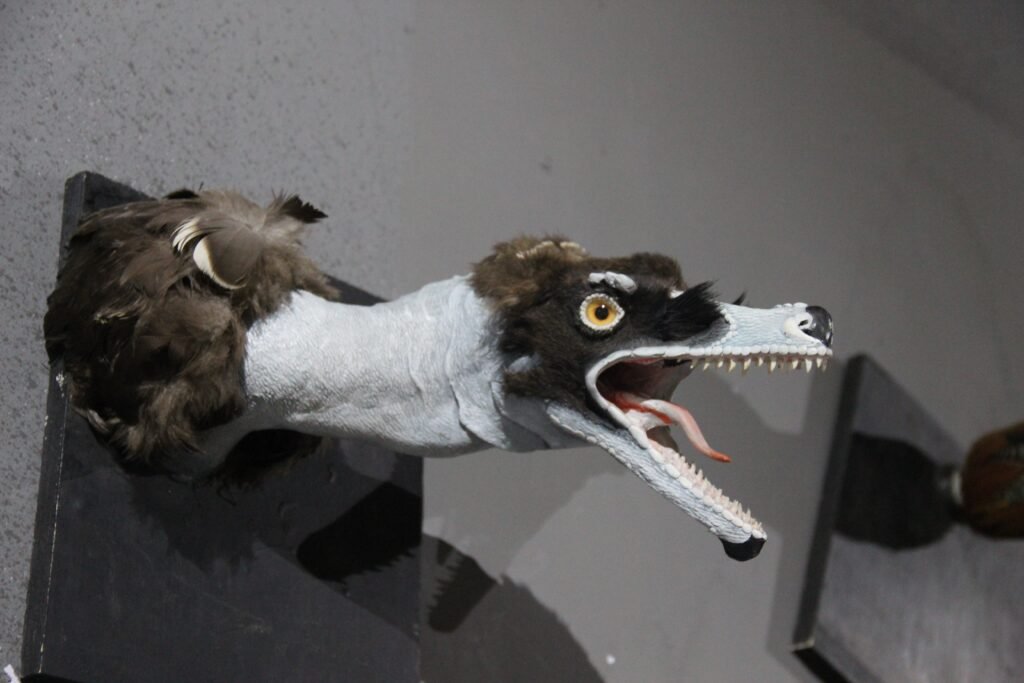Imagine a world where dinosaurs, those colossal and awe-inspiring creatures, roamed the Earth with feathers, much like the birds we see today. The idea is not just a flight of fancy but rooted in scientific discovery. Recent paleontological findings have unearthed fossils that hint at the presence of feathers on certain dinosaur species. But the question that tickles the imagination is: did these dinosaurs also shed their feathers in a manner akin to modern birds and reptiles? This intriguing notion opens up a realm of possibilities about the life and habits of these ancient giants, challenging our perceptions and sparking a curiosity that transcends time.
The Feathered Mystery

Feathers on dinosaurs are not merely a figment of imagination but a scientific revelation. Fossils discovered in places like Liaoning, China, have revealed imprints of feathers on dinosaurs like the Velociraptor and Archaeopteryx. These discoveries have turned the scientific world on its head, suggesting that feathers may have been more common among dinosaurs than previously thought. The presence of feathers implies a range of functions, from insulation to display, and perhaps even flight in some species. It’s a tantalizing glimpse into a prehistoric world where dinosaurs might have sported vibrant plumage, much like the birds that grace our skies today.
Shedding Light on Shedding Feathers

The concept of dinosaurs shedding their feathers is as fascinating as it is complex. Shedding, or molting, is a process observed in modern birds and reptiles, where old feathers or skin are replaced by new growth. This process is crucial for maintaining the health and functionality of their plumage. If dinosaurs shared this trait, it would suggest an advanced level of evolutionary adaptation. Imagine a Tyrannosaurus rex, not just shedding its skin like a snake but losing its feathers in patches, revealing a fresh coat underneath. Such a process would have profound implications for our understanding of dinosaur biology and behavior.
Comparing Dinosaurs, Birds, and Reptiles
To unravel the mystery of dinosaur molting, scientists look to modern birds and reptiles. Birds undergo a systematic molting process, often linked to seasonal changes or breeding cycles. Reptiles, on the other hand, shed their skin in response to growth or environmental factors. If dinosaurs exhibited similar patterns, it would position them as a unique bridge between these two groups. This comparison enriches our understanding of evolutionary biology, suggesting that dinosaurs may have shared traits with both birds and reptiles, further blurring the lines between these seemingly distinct classes of animals.
The Role of Feathers in Dinosaur Evolution

Feathers may have played a pivotal role in the evolution of dinosaurs, offering advantages that extended beyond mere aesthetics. They could have provided insulation, helping dinosaurs maintain body temperature in varying climates. Feathers might have also been used for display purposes, aiding in mating rituals or territorial disputes. The presence of feathers on certain dinosaurs suggests a level of adaptability and complexity that challenges traditional views of these creatures as purely scaly and cold-blooded. This evolutionary perspective invites us to reconsider how dinosaurs lived, interacted, and thrived in their environments.
Scientific Evidence and Fossil Findings

The evidence for feathered dinosaurs comes from a wealth of fossil discoveries. Impressions of feathers, along with fossilized skin and bone structures, provide clues to their existence and function. These fossils, often preserved in fine sediment, offer a snapshot of a world long gone. They reveal not just the presence of feathers but also their arrangement and possible coloration. Such findings are crucial for reconstructing the appearance and behavior of these ancient creatures, offering a window into a past that continues to captivate and inspire.
The Impact of Climate and Environment

The climate and environment in which dinosaurs lived would have significantly influenced their need for feathers. In colder regions, feathers could have provided necessary warmth, while in warmer climates, they might have been more ornamental. The diversity of feathered dinosaurs suggests that they inhabited a range of environments, each with its own challenges and opportunities. This adaptability speaks to the resilience and versatility of these creatures, hinting at a complex interplay between biology and environment that shaped their evolution.
The Connection to Modern Birds

The link between dinosaurs and modern birds is more than just a scientific curiosity; it’s a profound connection that reshapes our understanding of life’s continuity. Birds are the direct descendants of theropod dinosaurs, sharing numerous anatomical and behavioral traits. The presence of feathers in both groups underscores this connection, suggesting a shared evolutionary path. This relationship invites us to view birds not just as distant relatives but as living remnants of a prehistoric era, carrying forward the legacy of their dinosaur ancestors.
Challenges in Scientific Research
Studying the shedding habits of dinosaurs presents unique challenges. Fossil evidence is often incomplete, and interpreting the data requires careful analysis and sometimes educated guesswork. The absence of direct observations means that scientists must rely on comparisons with modern animals and advanced technologies like CT scans and microscopy. Despite these hurdles, the pursuit of knowledge drives researchers to explore new methodologies and collaborate across disciplines, pushing the boundaries of what we know about these enigmatic creatures.
The Fascination with Dinosaur Behavior
Understanding the behavior of dinosaurs, including their shedding habits, captivates scientists and enthusiasts alike. It’s a puzzle that combines elements of biology, paleontology, and evolutionary science. Each discovery adds a piece to the puzzle, revealing a more nuanced picture of how these creatures lived and interacted with their world. The fascination lies not just in the answers but in the questions that remain, inviting us to ponder the mysteries of a world that continues to spark imagination and wonder.
The Ongoing Quest for Knowledge
The study of dinosaurs and their feathered plumage is an ongoing journey, filled with discoveries and surprises. Each fossil unearthed, each hypothesis tested, brings us closer to understanding these magnificent creatures. The quest for knowledge is driven by curiosity and a desire to connect with a past that is both distant and intimately linked to our present. As we continue to explore, we are reminded of the endless possibilities that science offers, inviting us to dream, discover, and delve deeper into the mysteries of our world.



